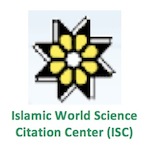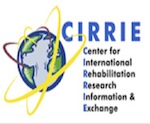


Google Scholar citation report
Citations : 5373
ASEAN Journal of Psychiatry received 5373 citations as per google scholar report
ASEAN Journal of Psychiatry peer review process verified at publons
| Journal Name | ASEAN Journal of Psychiatry (MyCite Report) | ||||
|---|---|---|---|---|---|
| Total Publications | 456 | ||||
| Total Citations | 5688 | ||||
| Total Non-self Citations | 12 | ||||
| Yearly Impact Factor | 0.93 | ||||
| 5-Year Impact Factor | 1.44 | ||||
| Immediacy Index | 0.1 | ||||
| Cited Half-life | 2.7 | ||||
| H-index | 30 | ||||
| Quartile |
|
- Anxiety Disorders
- Behavioural Science
- Biological Psychiatry
- Child and Adolescent Psychiatry
- Community Psychiatry
- Dementia
- Community Psychiatry
- Suicidal Behavior
- Social Psychiatry
- Psychiatry
- Psychiatry Diseases
- Psycho Trauma
- Posttraumatic Stress
- Psychiatric Symptoms
- Psychiatric Treatment
- Neurocognative Disorders (NCDs)
- Depression
- Mental Illness
- Neurological disorder
- Neurology
- Alzheimer's disease
- Parkinson's disease
Abstract
COCAINE CRAVINGS, BORDERLINE PERSONALITY DISORDER & ATTEMPTED HOMICIDE
Author(s): Bernat N Tiffon* and Jorge González FernándezIn the 80’s, in Spain, there was a very significant increase in the population addicted to heroin use. The behaviour patterns of use and abuse of this substance also caused many drug addicts to be linked to the associated consumption of multiple toxic substances, favouring the appearance of politoxicomania. The origin of the change of model in drug use began in mid- 1987 and in the following years, ecstasy and the so-called designer drugs began to spread throughout the festival scene in the United Kingdom, Western Europe and the Iberian Peninsul. In the 90’s, new substances were introduced into society that had little to do with heroin use, shifting the link to toxic substances to these better accepted and less questioned substances, avoiding the possible problems associated with consumption in marginal environments. The normalization of the consumption of substances of abuse began to have a greater social tolerance, breaking the stigma that led to the alarm raised by heroin consumption in the 80’s. In this sense, drugs were no longer associated with marginalization, and were seen in environments considered festive and, therefore, “normal”. ASEAN Journal of Psychiatry, Vol. 22(5): July 2021: 1-4.


























